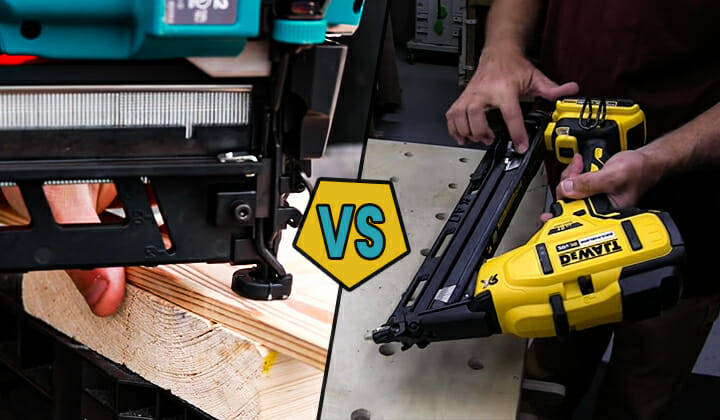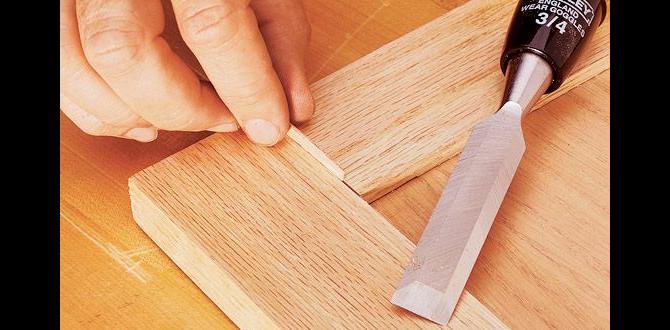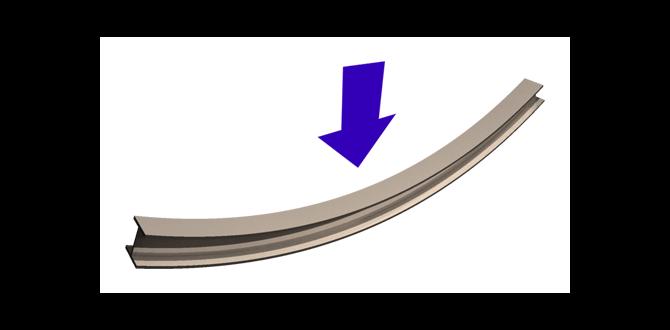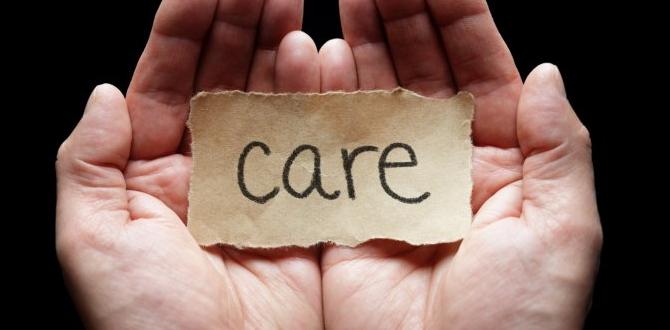Quick Summary:
Always wear safety glasses, hearing protection, and sturdy footwear when operating a nail gun. Additional gear like gloves and long pants can prevent injuries. Prioritize safety to ensure successful projects and avoid accidents.
Hey DIY enthusiasts and future woodworkers! Jack Shaffer here, your go-to guy for all things nail guns. Ever feel a little intimidated by these powerful tools? You’re not alone! Nail guns can be incredibly helpful for all sorts of projects, from framing a new deck to adding trim to a room. But with that power comes responsibility. The good news? Staying safe is simpler than you might think. By understanding the basic safety gear you need, you can prevent common accidents and build with confidence. Let’s dive in and make sure your DIY adventures are as safe as they are successful!
Table of Contents
Why Safety Gear Matters When Using a Nail Gun
Operating a nail gun might seem straightforward, but these tools are designed to drive fasteners at high speeds. This force, while useful for construction, can also lead to serious injuries if not handled with proper precautions. Think of it this way: a nail traveling at hundreds of feet per second can cause damage if it ricochets, misfires, or even if a nail tip protrudes through the workpiece.
The Occupational Safety and Health Administration (OSHA) provides extensive guidelines for power tool safety, and nail guns are a primary focus. Their emphasis on personal protective equipment (PPE) isn’t just regulatory; it’s based on real-world incidents and a desire to keep workers safe.
Ignoring safety gear is like building a house on a shaky foundation – it’s an accident waiting to happen. The right gear acts as your first line of defense, protecting you from flying debris, accidental nail penetration, and loud operational noise that can harm your hearing over time. We’ll break down exactly what you need and why each piece is so important.
The Absolute Must-Have Safety Gear
When you’re picking up a nail gun, some safety gear is non-negotiable. These are the items that offer the most critical protection and should be considered just as important as the nail gun itself. Let’s look at the essentials:
1. Eye Protection: Your First Line of Defense
This is probably the single most important piece of safety gear you’ll use with a nail gun. Why? Because flying debris, wood chips, or even a ricocheting nail can instantly damage your eyes, potentially leading to permanent vision loss. Even a small splinter can be incredibly painful and debilitating.
For nail gun operation, you need more than just your everyday glasses. You need safety glasses or goggles that meet certain standards. Look for:
- ANSI Z87.1 Certification: This is the U.S. standard for eye protection. It means the lenses have been tested for impact resistance.
- Side Shields: These are crucial because they protect your eyes from hazards coming in from the sides, not just directly in front.
- Full Coverage: Safety goggles offer the best protection, sealing around your eyes to prevent dust and debris from entering.
Remember, even if you wear prescription glasses, you still need to wear safety glasses or goggles over them. Regular eyeglasses are not designed to withstand the impact from a nail gun’s operation.
2. Hearing Protection: Guarding Against Noise
Nail guns are loud! Repeated exposure to the high decibel levels produced by a nail gun, especially during extended use, can lead to temporary or permanent hearing loss. Think about it: a compressor cycling or the forceful impact of driving a nail creates a significant amount of noise.
You have a few options for hearing protection, and the best choice often depends on your comfort and how long you’ll be using the tool:
- Earplugs: These are small, disposable or reusable inserts that go directly into your ear canal. They are great for convenience and can be worn under other gear. Look for earplugs with a high Noise Reduction Rating (NRR).
- Earmuffs: These fit over your entire ear and create a seal. They generally offer a higher NRR than earplugs and can be more comfortable for some people during longer periods of use.
The National Institute on Deafness and Other Communication Disorders (NIDCD) highlights that sounds at or above 85 decibels can damage your hearing over time. Nail guns can easily exceed this level, making hearing protection an absolute necessity for any DIYer using them regularly.
3. Footwear: Protecting Your Toes and Traction
When you’re working with power tools, especially in a workshop or on a job site, sturdy footwear is critical. Your feet are vulnerable to drops, punctures, and slips.
Here’s what to look for in appropriate footwear:
- Steel-Toe or Composite-Toe: This is paramount. If a heavy tool or workpiece falls, steel or composite toe caps can prevent severe toe injuries.
- Puncture-Resistant Soles: Nails can lie around on the floor during projects. A sole that can’t be easily penetrated by a stray fastener adds an extra layer of safety.
- Slip-Resistant Soles: Many DIY projects involve moving around, stepping on various surfaces, or working at heights. Good traction is key to preventing slips and falls.
- Ankle Support: Boots that offer good ankle support can help you maintain balance and reduce the risk of twists and sprains.
Avoid open-toed shoes, sneakers with smooth soles, or anything that doesn’t provide robust protection against impacts and punctures like those found in occupational safety boots.
Recommended Optional, But Highly Advised, Safety Gear
While eye protection, hearing protection, and sturdy footwear are the absolute basics, there are a few other pieces of gear that can significantly enhance your safety and comfort, especially during longer or more demanding projects.
1. Gloves: For Grip and Protection
Gloves might not seem like a primary safety item for a nail gun, but they offer several benefits:
- Improved Grip: Especially if you’re working with damp wood or in challenging conditions, gloves can prevent the nail gun from slipping in your hands, reducing the chance of accidental firing.
- Protection from Splinters: Handling wood can lead to minor cuts and splinters. Gloves provide a barrier.
- Reduced Vibration: Some specialized gloves can help reduce the amount of vibration transmitted from the tool to your hands, potentially preventing fatigue and long-term issues like Hand-Arm Vibration Syndrome (HAVS).
Look for work gloves that offer a good balance of protection and dexterity. Materials like leather or synthetic leather are often good choices. Even simple mechanic-style gloves can make a difference.
2. Long Pants and Sleeves: A Barrier Against Hazards
Wearing long pants and long sleeves might seem like common sense for woodworking, but it’s especially important when operating a nail gun. Your skin is vulnerable to:
- Flying Debris: Small wood chips, dust, and fasteners can be ejected at high speeds. Long clothing acts as a protective layer.
- Fastener Protrusion: While less common, nails can sometimes pass completely through thin materials. Long pants and sleeves offer a barrier against accidental contact.
- Scratches and Abrasions: Working around wood and tools can easily lead to minor cuts and scrapes.
Choose durable fabrics like denim or canvas. Avoid loose-fitting clothing that could get caught in machinery or the nail gun itself. This is a simple yet effective way to add a significant layer of protection.
3. Knee Pads: For Comfort and Safety During Repetitive Work
If your project involves a lot of kneeling, such as installing flooring, trim, or working on low-level framing, knee pads are a lifesaver. They protect your knees from impact and pressure, preventing discomfort and injury.
Beyond comfort, good knee pads can also:
- Improve Stability: They can help you find a more stable position when working on your knees.
- Prevent Abrasions: Working on rough surfaces can quickly wear down your skin and clothing.
Look for knee pads that are comfortable to wear for extended periods and that stay in place as you move. Padded styles with straps are common and effective.
Understanding Your Nail Gun’s Safety Features
Modern nail guns come with built-in safety mechanisms designed to prevent accidental firing. Understanding these is part of using the tool safely, but they are not a substitute for proper PPE.
Contact Trip Mechanism (Sequential vs. Contact Fire)
Most nail guns operate using what’s called a “contact trip” mechanism. This means the nail is driven only when two conditions are met simultaneously:
- The safety contact nose (the tip of the gun) is pressed firmly against the workpiece.
- The trigger is pulled.
This is known as a sequential firing mode, which is generally considered the safest. It allows you to precisely place each nail. Some models also offer “contact fire” mode (sometimes called bump fire), where holding the trigger down and bumping the nose against the work will continuously fire nails. While faster, this mode significantly increases the risk of accidental discharge and injury, and should only be used by experienced operators who understand its risks and are taking extra precautions.
Always consult your nail gun’s manual to understand its specific firing modes and safety features.
Safety Contact Nose
The tip of the nail gun has a movable piece (the safety contact nose) that must be depressed. If this nose is damaged or is being held up, the nail gun can malfunction and fire unexpectedly. Always inspect the nose before use.
A Table of Essential Nail Gun Safety Gear
To make it easy to remember, here’s a quick rundown of the safety gear you absolutely need and why:
| Safety Gear | Why It’s Essential | Key Features to Look For |
|---|---|---|
| Safety Glasses/Goggles | Protects eyes from flying debris, wood chips, and ricocheting nails. | ANSI Z87.1 certified, side shields, full coverage. |
| Hearing Protection (Earplugs or Earmuffs) | Prevents hearing damage from loud tool operation. | High Noise Reduction Rating (NRR), comfortable fit. |
| Sturdy Footwear (Steel/Composite Toe) | Protects feet from falling objects and punctures from stray nails. | Steel/composite toe, puncture-resistant sole, slip-resistant tread. |
| Work Gloves | Improves grip, protects hands from splinters and vibration. | Good grip material (leather/synthetic), comfortable fit. |
| Long Pants & Long Sleeves | Acts as a barrier against flying debris and accidental fastener contact. | Durable fabric (denim, canvas), not too loose. |
Best Practices for Safe Nail Gun Operation
Beyond just wearing the right gear, developing safe habits is crucial. Think of these as your operating manual’s safety chapter, brought to life!
- Never Disable Safety Features: Don’t tamper with the safety contact nose or any other built-in safety mechanism. These are there for a reason!
- Treat Every Nail Gun as Loaded: This golden rule applies to firearms, but it’s just as relevant for nail guns. Always assume it can fire at any moment.
- Keep Fingers Away from the Trigger: Never place your finger on the trigger unless you are actively intending to drive a nail into your intended workpiece.
- Never Point a Nail Gun at Anyone: Even if it’s not loaded or powered on, never aim it at another person. Accidental discharges can happen.
- Ensure the Workpiece is Secure: If the workpiece moves or kicks back when the nail is driven, it can cause the nail gun to recoil or the nail to go astray. Properly clamp or secure your material.
- Use the Correct Nails: Always use the type and size of nails recommended for your specific nail gun. Using the wrong fasteners can cause jams or damage the tool.
- Check Air Pressure (for Pneumatic Guns): Too much pressure can cause nails to over-penetrate or ricochet. Too little can lead to jams. Follow the manufacturer’s recommendations.
- Disconnect Power When Not in Use or Clearing Jams: For pneumatic guns, disconnect the air hose. For cordless or electric, remove the battery or unplug it. This is critical when clearing jams, performing maintenance, or storing the tool.
- Work in a Well-Lit Area: Good visibility helps you see your workpiece clearly, avoid accidental contact, and spot potential hazards on the floor.
- Never Carry the Nail Gun by the Hose or Cord: This can damage the hose/cord and potentially cause a safety hazard.
Common Misconceptions About Nail Gun Safety
It’s easy to fall into bad habits or misunderstandings when working with tools. Let’s clear up a few common myths about nail gun safety:
- “I’m only using it for a second, so I don’t need safety glasses.” Absolutely untrue. A single second is all it takes for a flying splinter or misfired nail to cause permanent eye damage.
- “This nail gun isn’t that loud.” Sound intensity can be deceiving. Even if it doesn’t feel painfully loud, consistent exposure can still lead to hearing loss over time. Always use hearing protection.
- “I can just use my regular sneakers.” As discussed, ordinary shoes offer little protection against dropped objects or sharp nails lying on the ground. Sturdy, protective footwear is a must.
- “The safety tip is too annoying, I’ll just ignore it.” This is one of the most dangerous misconceptions. The contact trip mechanism is a vital safety feature. Disabling or ignoring it dramatically increases the risk of accidental discharge.
- “Bump firing is safe if I’m careful.” While experienced professionals sometimes use bump fire for specific tasks, it’s inherently riskier due to the increased chance of unintended nail discharge. For beginners, it’s best to stick to sequential firing.
Frequently Asked Questions (FAQ) About Nail Gun Safety Gear
Got more questions? We’ve got answers! Here are some common queries from DIYers like you.
Q1: What is the single most important piece of safety gear for a nail gun?
A1: Without a doubt, it’s eye protection (ANSI Z87.1 certified safety glasses or goggles). Even a tiny piece of debris can cause devastating eye injury.
Q2: Do I really need hearing protection for just a few nails?
A2: Yes. Even short bursts of loud noise can contribute to hearing damage over time. It’s best to wear hearing protection every time you use a nail gun to protect your long-term hearing health.
Q3: Can I use any old work gloves?
A3: While any glove is better than none for protecting against splinters, it’s best to use gloves designed for work that offer a good grip and some vibration dampening. Avoid anything too bulky that hinders your control of the tool.
Q4: What kind of pants are best for nail gun safety?
A4: Durable, long pants made of sturdy material like denim or canvas are ideal. They provide a good barrier against flying debris and prevent accidental contact with fasteners that might pass through your workpiece.
Q5: My nail gun’s safety tip seems to get in the way. Can I modify it?
A5: Absolutely not. The safety contact nose is a critical safety feature. Modifying or disabling it is extremely dangerous and can lead to severe injuries.
Q6: Is it safe to carry a nail gun with my finger on the trigger?
A6: Never. Always keep your finger off the trigger until you are ready to drive a nail into the work. Treat every nail gun as if it were loaded and ready to fire.
For more detailed safety guidelines, the Consumer Product Safety Commission (CPSC) also offers valuable resources on power tool safety.
Conclusion: Build with Confidence, Build Safely!
There you have it, folks! Operating a nail gun is a fantastic way to speed up your DIY projects and achieve professional-looking results. But as we’ve covered, the key to enjoying these benefits without incident lies in prioritizing safety. By consistently using the essential gear – namely, robust eye protection, reliable hearing protection, and sturdy footwear – you’re building a solid foundation for safe operation.
Don’t forget that the added protection of gloves and durable clothing can make a significant difference, especially during longer sessions. Always remember to respect the tool, understand its safety features, and develop safe operating habits. When you combine the right gear with smart practices, you can tackle any project with confidence and peace of mind.
So, the next time you reach for your nail gun, take that extra moment to put on your safety gear. Your eyes, ears, and feet will thank you! Happy building, and stay safe out





